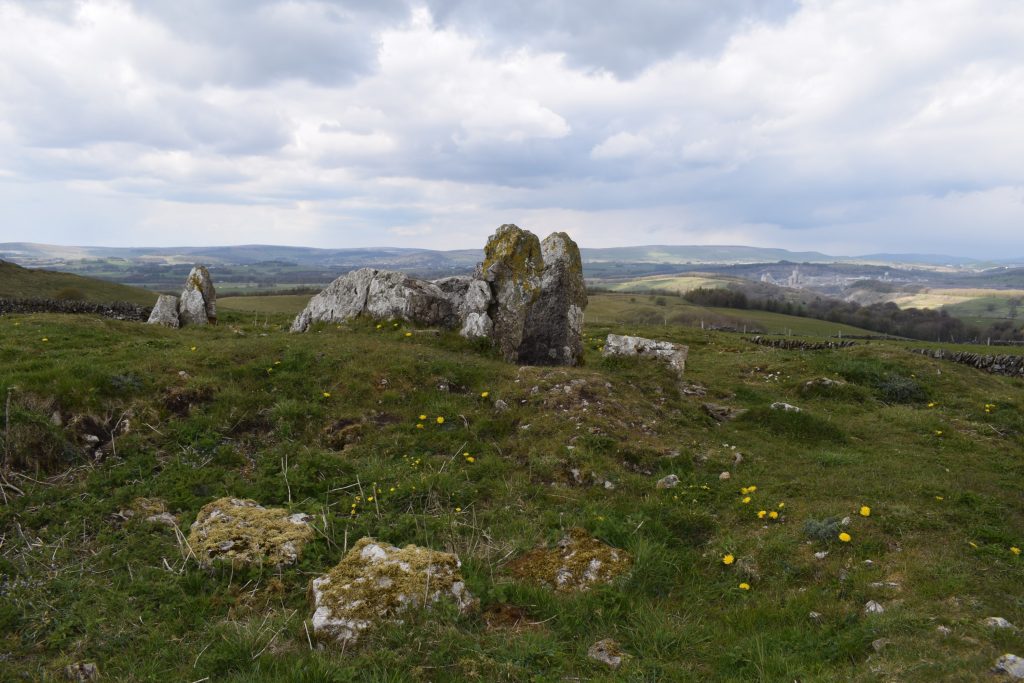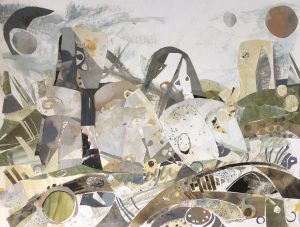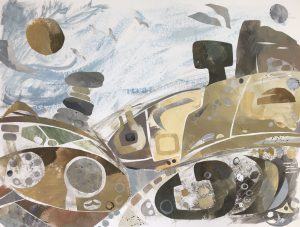
Stories of Discovery: Collaborative Engagement with the Peak District National Park
Written by Melanie Giles
2021 marks the 70th anniversary of the opening of the UK’s first ever national park, located on Manchester’s doorstep in the Peak District. Long renowned as the green lungs of its surrounding cities, its peaty upland mires now form a vital part of our regional response to climate change. Centuries of Mancunians have used the Peak not just for the exercise of the body but of the creative mind. Yet it also marks the 200th birth of one of its most famous antiquarians, Thomas Bateman, who excavated the traces of thousands of years of occupation in this landscape, notably the burials and grave goods which form the centrepiece of Sheffield’s Weston Park Museum archaeology galleries. Access to both these special places and the knowledge and creativity which museum collections can inspire has been severely impacted by Covid-19.
Our project worked with professional partners in the Peak District National Park and The University of Sheffield, as well as creative practitioners, Dr Abigail Flint (poet) and Dr Rose Ferraby (artist) to create moments of creative engagement with the past, to inspire people to re-engage with this landscape heritage.
We provided opportunities for students from the Department of Archaeology, University of Sheffield, to develop ‘Barrow Biographies’ (led by Senior Lecturer Dr Robert Johnston): stories of the people behind the burials and their grave goods, gleaned from cutting-edge new research as well as antiquarian reports.
These narratives provided the workshop materials for a virtual gathering of established and new poets, inspiring the collection we have called Vestiges (the title of Thomas Bateman’s original publication). The poems include vivid evocations of ancient artefacts (such as Abi Flint’s Cow Low Bowl) and places (Vestiges by James Caruth), an imagined love letter from the past (Your Mary-Ann by Christina Roseeta Walker), and reflections on the power of place in the present (Dark Peak by Rebecca Hurst and Wall by Vona Groake). Other poets focused on the healing power of moss (Ruin by Melanie Giles) and the value of access to both the past and present landscape (Ewan McColl by John Mcauliffe). The poems will be embedded in the StoryMap open access resource, hosted by the Peak District National Park. For many of the participants, this was an invaluable chance to meet across cities, and share work.
Abi Flint commented:
‘Through being part of the Vestiges project I feel more connected to the heritage of the area, experiencing the sites that Bateman excavated in a new light, and prompting me to reflect creatively on the traces of his work on the landscape and museum collections… The online workshop gave me insight into his contribution and connected me with other poets and archaeologists.’
James Caruth added:
‘Most of us have lived amongst a landscape that we have never read. Never imagined what existed before forests were cleared, fields ploughed, hedgerows planted. Never recognised the faint signs of occupation by those who came before us. To me, poetry has always seemed a form of archaeology, an unearthing of the past so we might better understand the present; poet and archaeologist patiently working away with – as Seamus Heaney said – “our scraping, clinking tools”.’
Complementing these poems, Rose Ferraby created a pair of abstract landscape collages (see images below) which evoked not just the contrastive landscapes and geology of the White Peak and Dark Peak (see images below) but sought to evoke the texture of barrow stratigraphy and colours of its hidden treasures. Cosmological motifs, silhouettes of weathered gritstone and the hue and patina of weathered materials prompt the imagination. These images are used in the poetry collection as well as providing the Peak Park with engaging new visions of our shared natural and cultural heritage.
Rose Ferraby comments:
‘These images drew together the landscapes of the Peak District its archaeological discoveries. Collage is a lovely medium through which to explore the themes of fragmentation and layering which so defines how we find and narrate archaeological stories. These two pieces explore the two bedrock landscapes of the Dark Peak and White Peak; the forms and assemblages that define them. They also draw on the discoveries of Thomas Bateman. Look carefully and you will see the plan of a barrow, the textures of a pot, the empty space of a hidden void. There are echoes of the poems in there too, caught lines and imagery that echo in the layers. With archaeology and art, we all find our own ways of seeing; I hope these images spark the imagination and allow people to find their own stories in the landscape.’
Finally, an online workshop, Marks and Traces: Poetry and Illustration in the Peak District, gave members of the public the chance to engage with the heritage of place by trying their hand at both poetic and artistic responses to the landscapes of the Peak or to places that have become meaningful to them.
For Anna Badcock, the Peak District National Parks Archaeologist, the project provided the opportunity to reintroduce creative practitioners and members of the general public virtually back into the Peak, before its wider opening-up in the summer. It also has an enduring legacy that will hopefully inspire future collaborations.
Anna Badcock adds:
‘The Stories of Discovery project has been a wonderfully collaborative and creative endeavour, and one which has brought a unique perspective to our understanding of archaeological enquiry, objects and places in the Peak District National Park. It has been a delight to work with you and the project team and I’m sure the partnerships and the spirit of exploration that has been forged will endure.’
Project duration: January – September 2021
Project lead: Dr Melanie Giles (Dept. of CAHAE, UoM)
External Partners:
- Anna Badcock (project mentor and Peak Park lead, Peak District National Park Archaeologist)
- Dr Bob Johnston (academic landscape archaeologist, University of Sheffield)
- Dr Abi Flint (poet and AHRC ‘Wet Futures’ research assistant, University of Bradford)
- Dr Rose Ferraby (independent artist and winner of the Michael Marks Award for Illustration 2017)
Audiences involved: General public (visitors to the Peak District and Sheffield’s Weston Park Museum)
Funding source: SALC and Creative Manchester Cultural Engagement Award



0 Comments